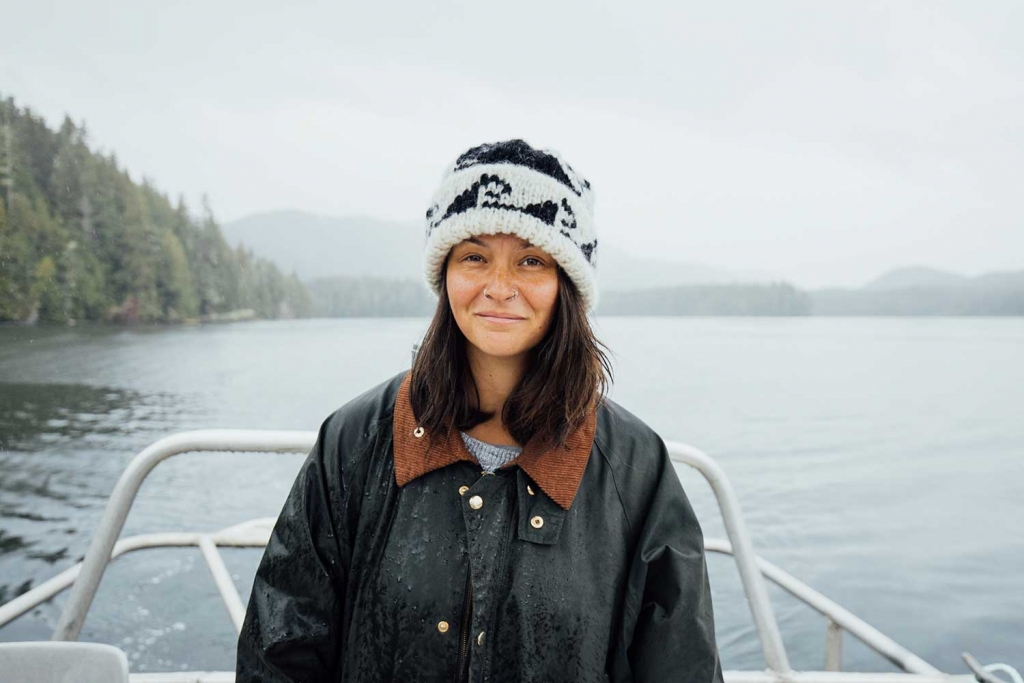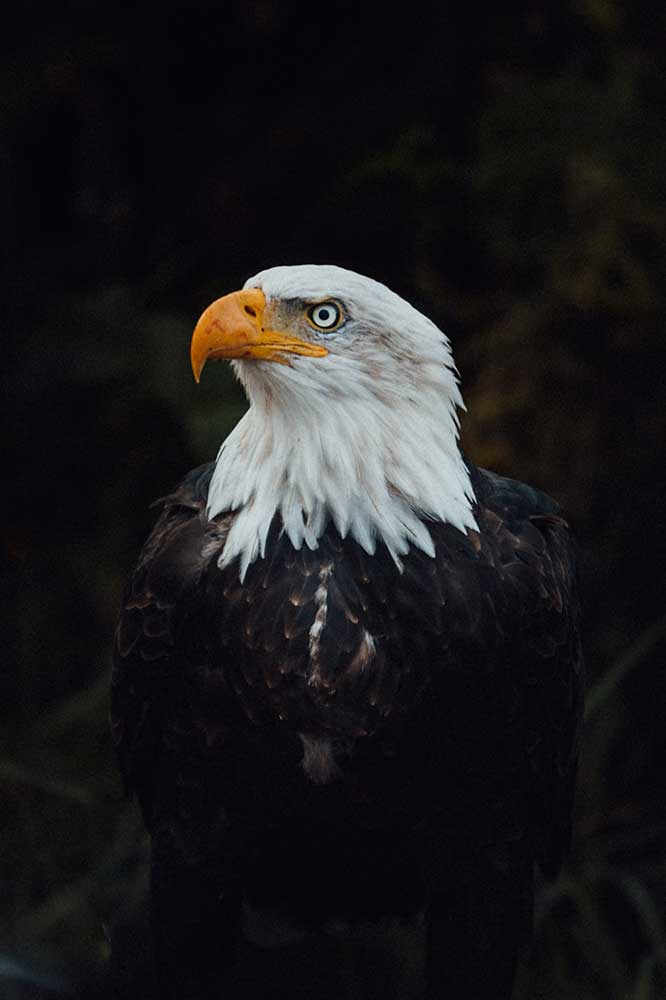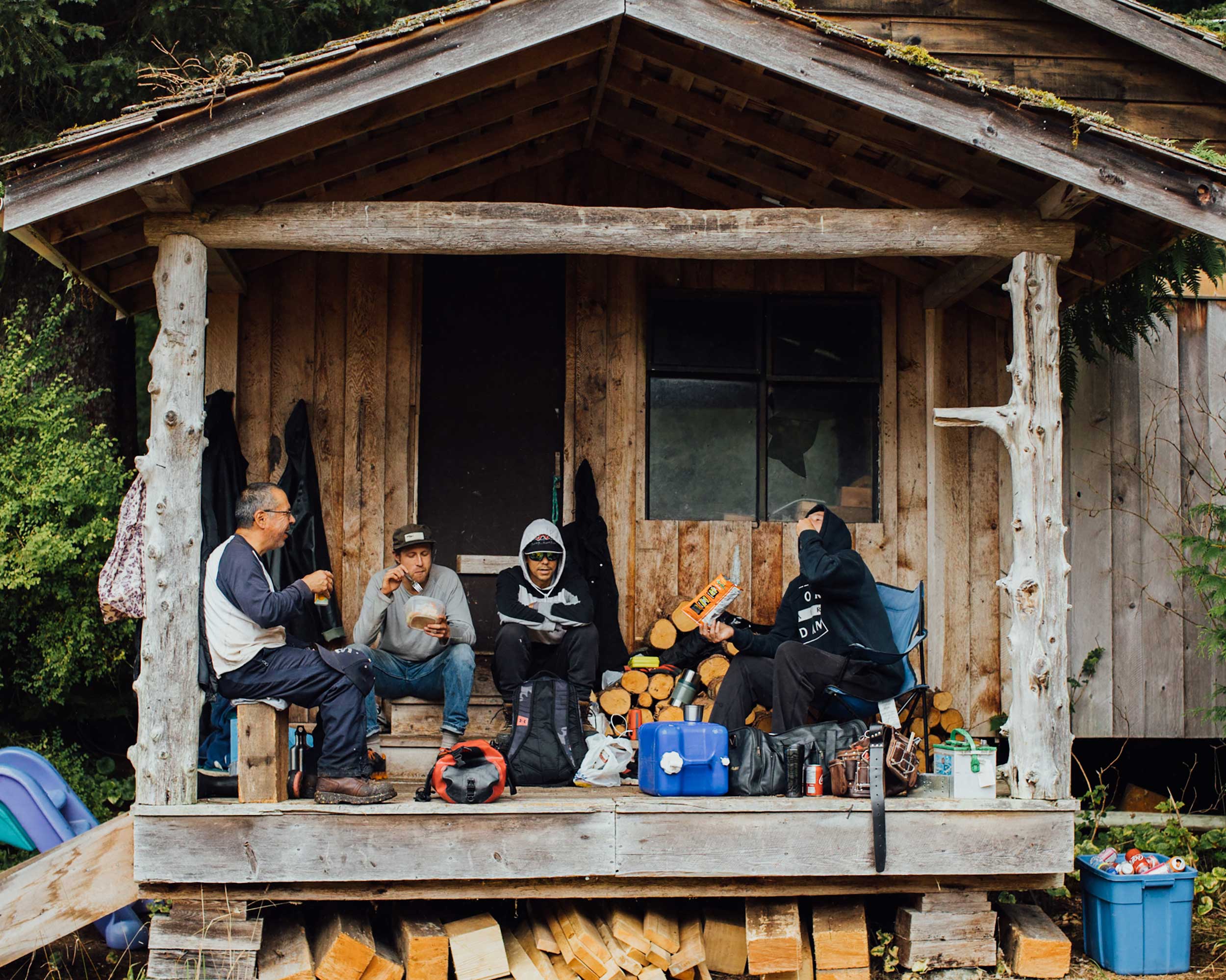Atelier
A Heiltsuk Guide to Authentic Wellness
When the Heiltsuk people had the opportunity to build a wellness centre in their territory, they turned to their own people and their own culture to define what the word means for them. Launched this summer, the Kunsoot Wellness Centre offers a lesson in how to take a more rooted and honest approach to well-being.
Intro—Mark Mann
Text—Jess Housty
Photos—Louise Whitehouse / The Narwhal
When we hear the word wellness, we tend to picture things like salads and smoothies and steam rooms and face masks. But when the Heiltsuk people in Bella Bella, British Columbia, had the opportunity to design and build a wellness centre for their community, they didn’t bother with Western, consumer-based notions of what it means to be well. Instead, they drew from their own cultural values, prioritizing family, traditional food, and being out on the land.
The Kunsoot Wellness Centre, which launched this summer, is a monument to authentic well-being.
The origin of Kunsoot traces back to the late 1990s, when Bella Bella’s traditional leaders, their hereditary chiefs, felt that it would be beneficial to have an organization in the community devoted to bringing youth and families out on the land. Since 1999 the Qqs (“Eyes”) Projects Society has been running land-based programs primarily in the Koeye River watershed, about 30 km south of Bella Bella by boat. But Koeye is only accessible for a few months of the year due to local conditions, and the community has long wanted something closer that everyone could visit.
Jess Housty is the executive director at Qqs. Several years ago, she co-led an effort to access funding aimed at wellness and mental health in remote communities. With the money, the community was finally able to realize its dream of an accessible centre where their traditional practices could be supported and harmonized. The creation of the Kunsoot Wellness Centre expresses the Heiltsuk people’s sovereign approach to well-being and offers a model for anyone looking to pursue a more honest and rooted path to wellness.
***
The Kunsoot Wellness Centre lies directly east of Bella Bella, about 15 minutes by boat. It’s accessible in just about any weather and all throughout the year. Approaching Kunsoot, there’s a long entry through a narrow channel and then a beautiful river with a little meadow running along it. It’s quite flat and quiet in there, and very still.
Historically there were a lot of big houses and smokehouses at the village site, because it was a place where people went to harvest and process salmon and put it up for the winter. You can still see the remnants of two stone fish traps in the bay, just across from where the new buildings are now. A little farther up the river, wooden stakes remain from an old weir. If you look carefully, you can find old stone tools washed up on the beach. The marks of the ancestors’ hands are on the land all around us.
It’s a really special place to a lot of people in the community. My grandmother is 93 and she remembers rowing over there from Bella Bella with her grandmother to pick berries and smoke fish. We really wanted to honour that kind of deep history and construct the new space in a culturally appropriate way, so that people can feel the powerful presence of our ancestors when they come to Kunsoot.

Jess Housty is the Executive Director at Qqs Projects Society and a board member of the Kunsoot Wellness Society.
Defining wellness
____
Throughout the conceptualization and construction of Kunsoot, we referred to a Heiltsuk health and wellness study that was completed in the 1980s. The study posed a really basic question: what do you need to be well?
The researchers spoke to as many community members as they could, inviting them to identify for themselves what contributed to their sense of well-being.
Overwhelmingly, Heiltsuk people responded that they needed a sense of connection to their family and to their culture, and the ability to get out on the land and access traditional foods.
Going back to the early stages of colonization, settlers tried to break our sense of intimate connection with the land, our culture, our family, our food, and everything that it means to be healthy. That’s a huge loss that I think we’re still grappling with on a spiritual level. What I’ve learned is that our people want to be their best and strongest Heiltsuk selves and to overcome all of those challenges. And Kunsoot is a response to that desire.
As we designed this space, we wanted people to feel that they’re close to their culture: to look around and see local timber and buildings that fit into their environment, the way that our ancestors’ buildings would have, and to see Heiltsuk art on the walls. We want them to be connected to their traditional foods, to have firepits and smokehouses right at the site.
We want to create this space that families can all be in together, where we’re building a sense of community and practising our culture and values. We have the freedom to do this; our ancestors did not always have that freedom.

The bald eagle is one of the Heiltsuk clan animals. They are seen frequently at Kunsoot as they nest nearby and fish in the bay.
Land and food
____
When I think about what makes me feel strong and connected, it’s understanding how my personal history and my family’s history are tied to the landscape around me.
I feel strongest and most resilient when I know I can rely on the lands and waters around me, because I have a reciprocal relationship with them. At the end of the day, our identity as Heiltsuk people is inseparable from our lands and waters.
When our kids and our families are out on the land, it’s like they’re taking a deep breath in and letting a deep breath out. They become different and stronger people. There’s a fundamental spark of connection there that no wave of colonization could break.
With our programs in Koeye, we harvest a lot of salmon and groundfish because that’s what’s in season and available when we’re running programs there. We take kids out into the forests and the meadows to harvest different components of ancestral medicines, so that they can learn how to identify the plants, how to correctly harvest them, how to process them, and what those medicines do. And then we gift them to people in the community who need them.
Because we’ll be able to access Kunsoot year-round, we’ll have access to a much greater variety of hands-on learning. We’ll be teaching people to harvest different medicines, to hunt and process deer and ducks and geese and things that are available in different seasons. We’ll be able to expand on what we do in Koeye and explore the whole of our Heiltsuk identity through the cycles of a year.
We want our people to feel confident when they’re out on the land. We want them to thrive by identifying the things around them that are there to help them thrive, but also give them a sense of responsibility to care for those things and build a deeply reciprocal relationship with the lands and waters.

Newly hired Heiltsuk work crew members are paired with skilled mentors to build capacity that will benefit the community in the long term. Members of the local work crew, from left to right: Martin Campbell, Al Laliberte, Korrie Gladstone, and Chris Humchitt.
Family and culture
____
The Heiltsuk learning model involves the whole family. Before contact with Europeans, we would have had all generations of the family living and working together. Everybody had a role.
But that social system was fractured, most of all by the trauma of residential schools and the Sixties Scoop. So creating opportunities for three or four and sometimes even five generations of a family to all go out on the land together is really a return to the way we did things pre-contact.
When everybody has a role and everyone’s together, you’re learning and healing across generations and it’s a really beautiful thing to see.
The beauty of a multi-purpose, multi-user space like Kunsoot is that we could customize it for different anticipated user groups based on their own feedback and direction. We have cabins that are designed for a whole family unit, some meant for field trips, and some designed as safe houses for people in need. Others are really simple staff cabins. We have a beautiful caretakers’ cabin. They all look a little bit different based on the different users of the space. Our people will see themselves and their ideas manifested in the Kunsoot Wellness Centre. And our goal is to have a place for every Heiltsuk person there.

Larry Jorgenson is the Project Manager for Kunsoot Wellness Centre. Along with his four decades of experience in land-based healing, he has experience managing remote construction projects — a skillset that benefits the project immensely.
Reclaiming wellness
____
Defining wellness comes down to two fundamental things. Firstly, on a deeply personal level, ask yourself: what makes you feel well? Not what society tells you that you need to be well. Not what your doctor or your therapist tells you that you need to be well.
What makes you feel well? Being able to answer that question is a really powerful exercise for anyone.
The other piece that I think is really important is to focus on community care and community building, because no one can heal alone in a vacuum. I encourage people to think about what gives them a sense of community. Ask yourself: what does mutual aid look like where you are?
Returning to those two questions is an exercise that anyone anywhere can undertake. For us, the answer looks like Kunsoot. For other people, it will look different. But the answer will always have power.
Jess Housty is a mother, plant worker, land-based educator, and citizen of the Heiltsuk Nation. She lives in her ancestral homelands in Bella Bella, BC, where she leads Qqs (Eyes) Projects Society and supports the growth of the Kunsoot Wellness Centre & Society.
Never Miss Another Issue
Two issues per year
25% OFF previous issues
Free Shipping in Canada